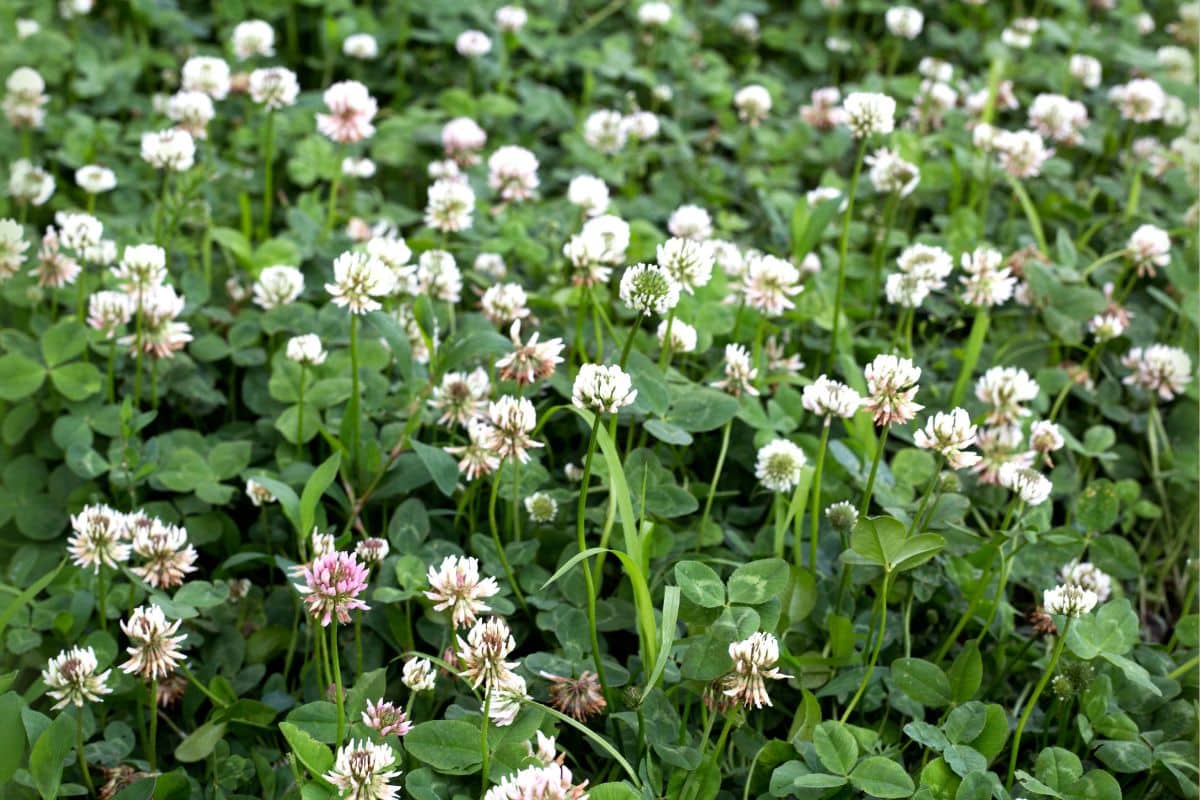Transforming your traditional lawn into a clover-filled green space offers numerous benefits for both your garden and the environment. Clover lawns require less maintenance, fewer resources, and provide natural benefits that grass simply can’t match. If you’re tired of constant mowing and fertilizing, a clover lawn might be the perfect solution for your outdoor space.
Benefits of replacing grass with clover
Switching from a traditional grass lawn to clover comes with multiple ecological and practical advantages that many homeowners find appealing. Understanding these benefits can help you make an informed decision about your lawn transformation project.
Clover naturally fixes nitrogen from the air into the soil, essentially fertilizing your lawn without chemical additives. This self-sustaining quality means you’ll save money on fertilizer while maintaining a lush, green yard. Unlike traditional grass that often develops brown patches during dry spells, clover remains green even during moderate drought conditions.
Maintenance requirements drop significantly with a clover lawn. You’ll spend less time mowing since clover grows to a limited height of about 2-4 inches. Many clover varieties only need mowing a few times per season, if at all, compared to weekly grass cutting. This reduced maintenance schedule gives you more time to focus on other garden projects, like planting fall flowers for a vibrant garden.
The environmental impact of clover lawns cannot be overstated. They provide excellent habitat for beneficial insects, particularly bees and other pollinators that are vital to our ecosystem. The dense growth pattern of clover also helps prevent soil erosion and naturally suppresses many common weeds.
From a financial perspective, clover lawns require significantly less water than traditional grass varieties. Their deep root systems access moisture from lower soil levels, reducing the need for frequent watering. This water efficiency can lead to noticeable savings on your water bill, especially in drier regions.
Methods for converting grass to clover
When transitioning your lawn from grass to clover, you have several approaches to consider. The method you choose should align with your timeline, budget, and how thoroughly you want to remove the existing grass.
The gradual overseeding method works well for those who prefer a less drastic transition. This approach involves mowing your existing lawn very short (about 1-2 inches) and then spreading clover seeds directly over the grass. The clover will gradually establish itself among the grass, eventually becoming the dominant ground cover. This method takes longer but requires minimal disruption to your existing lawn.
For more immediate results, the complete lawn replacement technique offers a fresh start. This method involves removing the existing grass entirely before seeding with clover. Start by killing the grass using either physical methods (solarization with plastic sheeting) or organic herbicides. Once the grass is dead, remove the debris, prepare the soil, and seed with your chosen clover variety.
The specific steps for complete lawn replacement include:
- Kill existing grass using your preferred method
- Remove dead grass and debris from the area
- Loosen the top 1-2 inches of soil with a rake
- Test and amend soil pH if necessary (clover prefers slightly acidic to neutral soil)
- Spread clover seed according to package directions
- Lightly rake to incorporate seeds into soil surface
- Water thoroughly and maintain moisture until established
A third option is the patch-by-patch conversion method, which allows you to transform your lawn gradually in sections. This approach minimizes bare areas and lets you experiment with different clover varieties in different parts of your yard. You might find that certain areas with specific sun exposure or soil conditions favor particular clover types.
When dealing with problematic lawn areas, like spots where plant diseases commonly occur, clover can provide a resilient alternative that’s less susceptible to many common lawn diseases.
Selecting the right clover variety
Choosing the appropriate clover species for your specific conditions is crucial for success. Different varieties offer unique characteristics that may better suit your climate, soil type, and lawn usage patterns.
White clover (Trifolium repens) is the most common choice for lawn replacement. It grows low to the ground, typically reaching only 2-8 inches in height, and spreads via stolons to create a dense mat. Dutch white clover remains particularly popular for its durability and adaptability to various soil conditions. This variety tolerates moderate foot traffic and partial shade, making it versatile for most residential settings.
Microclover, a dwarf variety of white clover, has gained popularity in recent years. It features smaller leaves and a growth pattern that blends exceptionally well with traditional grasses. This variety reaches only about 4 inches at maturity and produces fewer flowers, which may appeal to those who prefer a more traditional lawn appearance.
For areas with hotter, drier climates, consider red clover (Trifolium pratense) or strawberry clover (Trifolium fragiferum). These varieties demonstrate excellent drought tolerance once established. Red clover grows taller (up to 24 inches) and might require occasional mowing if you prefer a shorter lawn appearance.
When selecting your clover variety, consider these important factors:
- Climate conditions in your region
- Amount of foot traffic the area receives
- Sun exposure across your lawn
- Soil type and drainage patterns
- Whether you want a pure clover lawn or a grass-clover mix
Some gardeners prefer mixing clover with drought-resistant grasses or other ground covers for diversity. Just as gardeners might mix different cucumber varieties for different purposes in vegetable gardens, combining clover varieties can create a more resilient lawn ecosystem.
Maintaining your new clover lawn
Once established, clover lawns require significantly less maintenance than traditional grass, but they still benefit from some basic care to thrive. Understanding the proper maintenance practices will help ensure your clover lawn remains healthy and attractive year after year.
Watering needs for clover are minimal compared to grass. During establishment, keep the soil consistently moist until seedlings reach about 2 inches in height. After that, clover typically requires watering only during extended dry periods. Its deep root system allows it to access moisture from lower soil levels, making it naturally drought-resistant.
Mowing becomes optional with clover lawns. If you prefer a manicured look, you can mow occasionally to maintain a height of about 2-3 inches. However, many homeowners choose to let clover grow to its natural height and simply enjoy the delicate white flowers that appear periodically. These blossoms not only add visual interest but also provide valuable resources for pollinators.
Fertilization is rarely necessary for clover lawns since the plants fix nitrogen naturally. However, if your soil lacks other essential nutrients, a light application of phosphorus and potassium might benefit growth. A soil test can help determine if any amendments are needed.
With proper establishment and minimal maintenance, your clover lawn will provide a beautiful, environmentally friendly alternative to traditional grass for years to come.

